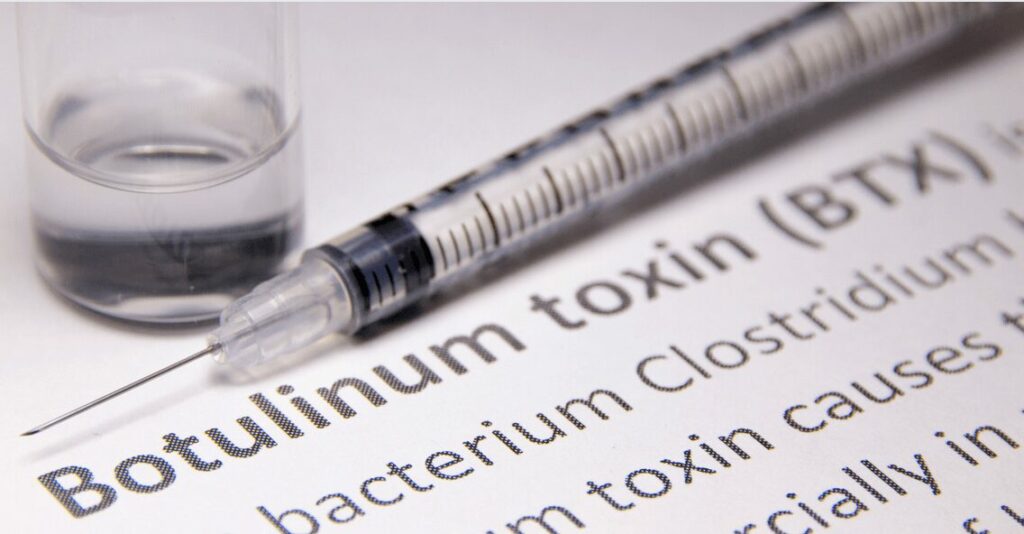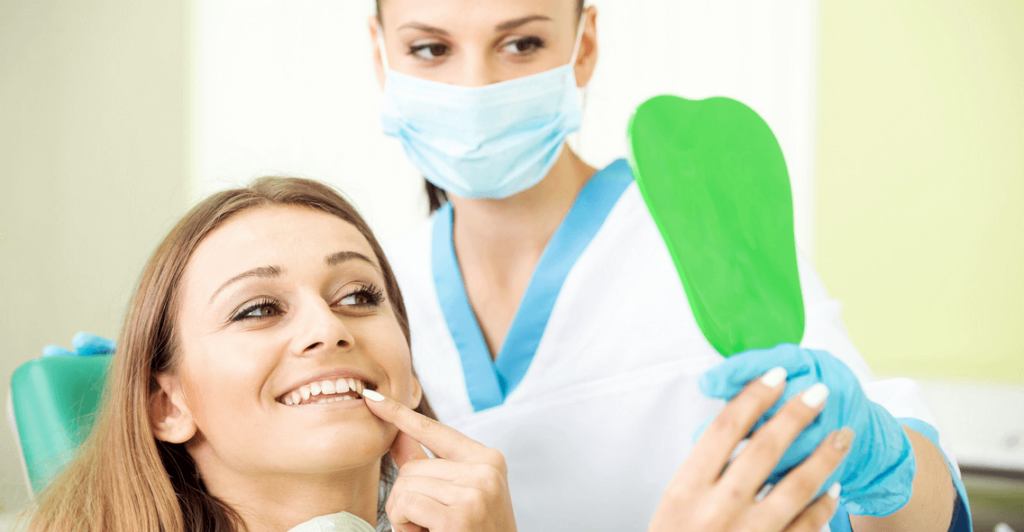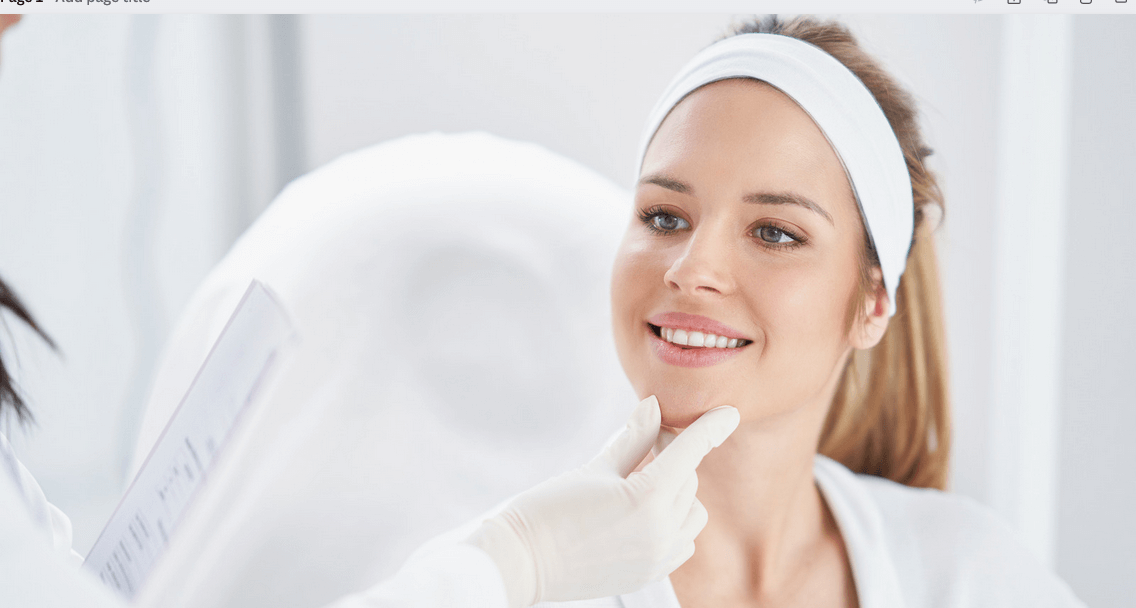Botox, a name once solely synonymous with cosmetic surgery to reduce wrinkles, has found a groundbreaking and innovative application within dentistry. Its ability to relax muscles delivers stunning aesthetic improvements. It offers significant therapeutic benefits, particularly in treating bruxism— a condition characterized by involuntary teeth grinding or clenching that can lead to severe dental wear, jaw discomfort, and chronic headaches. Over the years, Botox has steadily risen in popularity among dental professionals and patients alike for its efficacy in transforming smiles and alleviating symptoms of temporomandibular joint disorders (TMJ/TMD) and bruxism. This blog aims to demystify Botox in dentistry, offering readers a comprehensive understanding of its dual role in enhancing cosmetic appearance and providing crucial relief from dental and muscular conditions. We’ll explore the benefits and essential considerations of integrating Botox treatment into dental care, underlining how it stands as a testament to the evolution and adaptability of modern dentistry. Through informed insights, we aim to educate and inspire confidence in individuals considering Botox as a multi-faceted solution for their aesthetic and therapeutic dental needs.
What is Botox?
Botox, scientifically known as botulinum toxin, is a protein derived from the bacterium Clostridium botulinum. It has a wide range of uses in both the medical and cosmetic fields. Medically, Botox is employed to treat various conditions involving muscular disorders, such as chronic spasms and conditions like cerebral palsy that involve overactive muscles. Cosmetically, it’s best known for its ability to temporarily relax facial muscles, thereby reducing the appearance of wrinkles and fine lines. Its dual functionality has paved the way for innovative treatments beyond traditional expectations, merging therapeutic relief with aesthetic enhancements.
Botox in Dentistry
In dentistry, Botox has transcended its conventional cosmetic boundaries to become a vital tool in dental treatments, focusing primarily on enhancing facial aesthetics and treating muscular conditions affecting the oral cavity. Its application in dental procedures is twofold; it assists in creating a more aesthetically pleasing smile through minute adjustments in facial muscles and plays a crucial role in treatments. For patients suffering from bruxism, TMJ/TMD, and other orofacial pain syndromes, Botox provides significant relief by relaxing the muscles, thereby reducing symptoms associated with these conditions. This innovative use of Botox in dentistry exemplifies the field’s evolution and adaptability, offering patients both cosmetic and therapeutic benefits.
Why Do Dental Clinics Offer Botox?

In recent years, dental clinics have expanded their service offerings to include Botox treatments, primarily due to the myriad benefits that Botox can provide in dental health and aesthetics. This strategic inclusion is multifaceted; it allows for a complete approach to facial aesthetics and offers therapeutic solutions for various dental conditions. Initially used for cosmetic enhancements, Botox has found its place in dentistry because it effectively treats conditions like bruxism, TMJ disorders, and even gummy smiles by relaxing the overactive muscles contributing to these issues. Additionally, dental professionals possess an intricate understanding of facial anatomy, making them uniquely qualified to administer Botox with precision for both aesthetic and therapeutic outcomes. By offering Botox treatments, dental clinics can provide more comprehensive care that addresses their patients’ functional and aesthetic concerns, enhancing overall patient satisfaction and expanding the scope of dental practice.
The Cosmetic Benefits of Botox
Integrating Botox in dental practices has extended the frontier of cosmetic dentistry, allowing dentists to refine and enhance facial aesthetics precisely. This section explores Botox’s cosmetic advantages, focusing on aesthetic improvements and documented success stories.
Aesthetic Improvements
Botox’s ability to temporarily paralyze muscles significantly impacts facial aesthetics, especially around the mouth and smile lines. By carefully administering Botox injections, dentists can smooth out peri-oral wrinkles, elevate the corners of the mouth, and reduce the prominence of nasolabial folds and marionette lines. This results in a more youthful and pleasant facial appearance, complementing dental work like veneers or teeth whitening. Additionally, Botox can correct a “gummy smile,” a condition where excessive gum tissue is visible above the top teeth when smiling. By relaxing the upper lip muscles, Botox allows for a more balanced and aesthetically pleasing smile, enhancing overall facial harmony.
List of Aesthetic Improvements with Dental Botox
Botox in dentistry has ushered in a new era of aesthetic enhancements, contributing significantly to the artistry of smile design. Below is a detailed list of aesthetic improvements that dental Botox can facilitate:
- Softening of Peri-oral Wrinkles: This treatment targets the fine lines around the mouth, often accentuated by smiling, speaking, and eating, leading to a smoother, more polished appearance.
- Elevation of Mouth Corners: Helps lift the corners of the mouth, countering the signs of sagging or downturned lips, creating more content and positive facial expression.
- Reduction of Nasolabial Folds and Marionette Lines: This procedure diminishes the prominence of the laugh lines and creases running from the corners of the mouth down the chin, offering a more youthful look.
- Corrections of a “Gummy Smile”: Adjusts the extent of gum visibility, ensuring a balanced ratio of the lip-to-gum display when smiling, enhancing smile aesthetics.
- Harmonization of Smile Symmetry: A symmetrical smile is achieved by relaxing uneven muscle tension around the mouth, ensuring uniformity in the smile’s appearance.
- Refinement of Lip Shape: This procedure allows subtle enhancements to the lip’s contour and volume, allowing you to fine-tune the smile’s frame without invasive procedures.
Each of these improvements is meticulously achieved through Botox’s precision in relaxing targeted facial muscles, showcasing the integrated approach of modern dentistry in enhancing both dental health and facial aesthetics.
Botox as a Treatment for Bruxism
Understanding Bruxism
Bruxism is a condition characterized by the involuntary or habitual grinding of teeth and clenching of the jaw, which can occur both awake and during sleep. This repetitive motion can lead to various dental health issues, including enamel wear, tooth damage, increased tooth sensitivity, and jaw disorders. The exact cause of bruxism is often hard to determine but can be linked to stress, anxiety, abnormal bite, or crooked or missing teeth. Beyond the physical discomfort and potential dental damage, bruxism can also cause headaches, earaches, and facial pain, highlighting the importance of seeking effective treatment.
How Botox Helps
Botox relieves bruxism by targeting its underlying cause: the muscle tension that leads to involuntary grinding and clenching. When injected into the muscles responsible for these actions, mainly the masseter and the temporalis, Botox temporarily paralyzes them, significantly reducing muscle activity without affecting the normal functions of chewing or speaking. This relaxation of the muscles prevents involuntary clenching and grinding, protecting the teeth from excessive wear and alleviating the associated pain and discomfort. By addressing the muscular aspect of bruxism directly, Botox offers a targeted solution that mitigates the symptoms and contributes to the long-term preservation of dental health.
The Procedure: What to Expect

Consultation and Planning
The initial consultation for Botox treatment in dentistry begins with a comprehensive assessment of the patient’s medical history, facial aesthetics, and specific dental concerns. This step is crucial for identifying areas that can be improved and ensuring that Botox is suitable for the patient. Dentists will discuss the patient’s aesthetic goals and dental health needs to tailor a treatment plan that addresses individual requirements. Digital imaging or photography may analyze facial symmetry and dynamics, providing a visual guide for precise Botox application. This collaborative approach ensures that the expected outcomes align closely with the patient’s desires, setting the stage for successful treatment.
The Botox Injection Procedure
The Botox injection procedure is straightforward, minimally invasive, and generally completed within a short office visit. Before beginning, the treatment area is cleaned, and a topical anesthetic may be applied to minimize discomfort. Using a fine needle, the dentist will inject a precise amount of Botox into the targeted facial muscles. Patients experience minimal discomfort, often described as a slight pinch or pressure. The process requires meticulous precision to achieve optimal results, ensuring only the intended muscles are affected. After the injections, patients can immediately resume their day-to-day activities, making it a convenient option for those seeking aesthetic or therapeutic dental improvements.
Aftercare and Follow-up
After receiving Botox injections, it is essential to follow specific aftercare instructions to maximize treatment benefits and recovery. Patients are advised to avoid rubbing or massaging the treated areas for several hours to prevent spreading the Botox to unintended muscles. Strenuous physical activity should be avoided for the rest of the day. Mild redness or swelling at the injection sites is common but typically resolves quickly. Follow-up appointments are essential to assess the results and determine the need for adjustments. These sessions allow the dentist to fine-tune the treatment, ensuring the patient’s aesthetic and therapeutic goals are met. Additionally, they provide an opportunity to plan for future sessions, maintaining the desired outcomes over time.
Safety and Considerations
Botox has been widely recognized for its safety and effectiveness, not only in the cosmetic industry but also in the field of dentistry for therapeutic applications. The safety profile of Botox is well-established, with side effects being generally rare and mild when administered by a qualified professional. Potential side effects can include temporary bruising, swelling at the injection site, or a mild headache. Very rarely, Botox can lead to more serious side effects, such as difficulties in swallowing, speaking, or breathing, when not administered correctly. Botox treatments must be performed by a dentist or medical professional trained in facial anatomy and the precise techniques required for Botox injections to minimize risks. Furthermore, a thorough consultation and health assessment before treatment can identify potential contraindications to Botox therapy.
Determining Candidacy for Botox Treatment
The ideal candidates for Botox in dentistry are individuals looking for non-surgical solutions to address dental concerns such as bruxism and TMJ disorders or to enhance their smile aesthetics. Good candidates should have realistic expectations regarding the treatment outcomes and be in overall good health without any conditions that could impair healing or increase the risk of complications. Individuals with certain neurological disorders, pregnant or breastfeeding women, and those allergic to any components of Botox might not be suitable for treatment. During the initial consultation, dentists evaluate the patient’s medical history, current health status, and specific needs to determine if Botox is an appropriate and safe option for them. It’s a collaborative process to ensure the patient’s safety and satisfaction with the treatment results.
Botox vs. Other Bruxism Treatments
Botox treatment presents a novel approach to managing bruxism, differing significantly from traditional methods such as oral appliances and behavioural modifications. Oral appliances, like night guards, work by physically preventing teeth from grinding against each other, thereby protecting them from wear and reducing strain on the jaw muscles. Behavioural modifications address the root causes of bruxism, such as stress, by incorporating relaxation techniques and habit-reversal strategies. While these methods are effective for many, they do not directly target the muscle activity responsible for bruxism. Botox offers direct relief from the muscle tension and pain associated with bruxism by temporarily paralyzing the muscles involved in clenching and grinding. However, unlike oral appliances and behavioural modifications, Botox requires periodic maintenance and may not address the underlying causes of bruxism. The choice among these treatments should be based on the individual’s specific needs, the severity of symptoms, and personal preference.
FAQs
How long do the effects of Botox last in dental treatments?
The effects of Botox in dental applications typically last between 3 to 6 months. The duration can vary based on the individual’s muscle activity and metabolism. Periodic follow-up treatments are necessary to maintain the desired results.
Is the Botox treatment painful?
Most patients report minimal discomfort during Botox injections, often describing the sensation as a brief pinch. Dentists may use a topical anesthetic to reduce discomfort, ensuring a relatively pain-free experience.
Can Botox treat all types of TMJ disorders?
While Botox has been effective in relieving pain and discomfort associated with TMJ disorders, it may not be suitable for all cases. It is most effective in cases where muscle tension significantly contributes to the disorder. A thorough evaluation by a dental professional is necessary to determine if Botox is an appropriate treatment option for your specific condition.
Are there any activities I should avoid after receiving Botox treatment?
It is recommended to avoid rubbing or applying pressure to the treated area for at least 24 hours to prevent the Botox from spreading to unintended muscles. Strenuous physical activity should also be avoided for the rest of the day following the treatment.
How quickly can I see results after the Botox procedure?
Visible improvements from Botox injections can typically be observed within a few days, with the maximum effect usually becoming apparent within two weeks. However, the onset of results may vary slightly from person to person.
Conclusion
We’ve explored the multifaceted role of Botox in dentistry, highlighting its safety, effectiveness, and the considerations involved in treatment. Botox has emerged as a revolutionary solution for enhancing dental aesthetics and providing therapeutic relief in conditions like bruxism and TMJ disorders. Its ability to offer direct relief from muscle tension and pain distinguishes it from traditional methods such as oral appliances and behavioural therapies. Despite the need for periodic maintenance and its inability to address the root causes of certain conditions, the benefits of Botox, including minimal discomfort and quickly visible results, make it an attractive option for many seeking cosmetic improvements and relief from dental-related discomforts. Anyone considering Botox for dental purposes must consult a qualified professional to ensure safety and the most satisfactory outcome.
If you’re considering Botox for your smile or dental discomfort, Mirror Lake Dental in Camrose, AB, can help. Contact us for a consultation to explore the aesthetic and therapeutic benefits of Botox.





